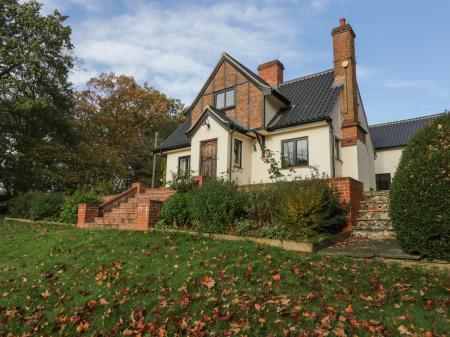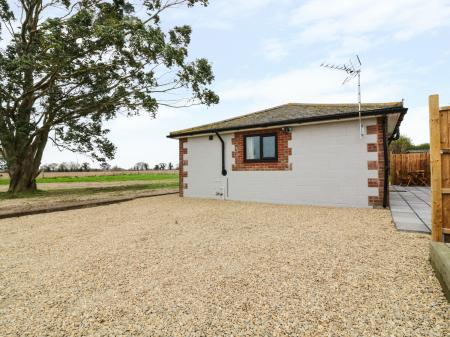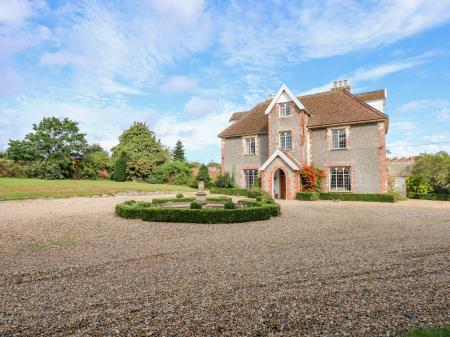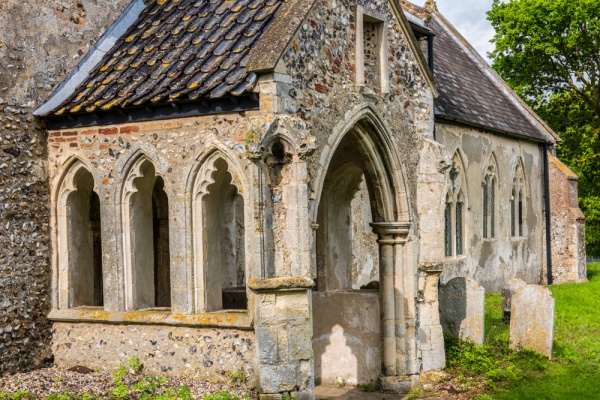
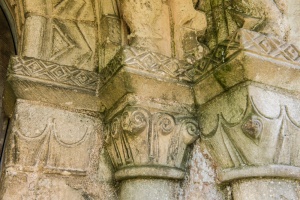
There are 124 round-tower churches in Norfolk, and this is one of the finest examples.
As fine as the tower is, it is the ornate porch that really catches your eye as you approach the church. The porch was added in the 13th century, with three Decorated Gothic windows inserted on either side. It is the windows that really catch the eye; the fine tracery and slender pillars make the porch seem light and spacious, like something from a fairy tale.
The porch appears much too narrow for the Norman door it protects; indeed, the sides of the porch cut into the door in a very odd way, as if the porch was intended for a much smaller space. The door itself is beautifully carved with traditional Norman chevron motifs in three layers.
The north doorway, viewable from the churchyard, is not as grand but still features typical Norman carving details.
The interior is very simple, with a Romanesque arch separating the tower from the nave, more Decorated windows, and an octagonal font. The capitals of the chancel arch are well carved, and there are several interesting memorial brasses in the nave, including one to Sir Anthony Gaudy (d. 1642), featuring the symbol of a tortoise on his coat of arms.
Most of the interior furnishings are Victorian, including the oak pulpit and pews. Look for bench ends carved with grapes and vine leaves, mimicking medieval fashion. There is a bronze plaque set on a white marble base, acting as a WWII war memorial, with a figure of Britannia above. South of the high altar is a 14th-century double piscina set into the wall. Above, in the south sanctuary window, are small sections of medieval stained glass.
St John's church is no longer used for regular worship and is in the care of the Churches Conservation Trust. It is normally open daylight hours, but please do check official opening details on the CCT website before visiting.
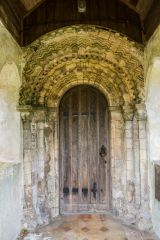
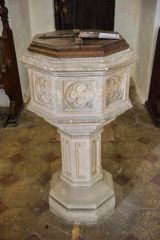
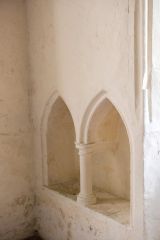
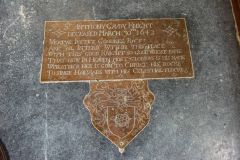
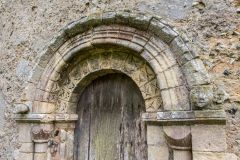
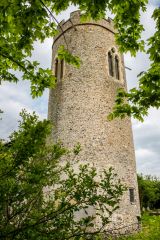
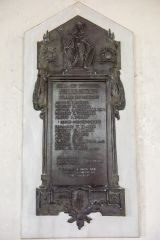
 We've 'tagged' this attraction information to help you find related historic attractions and learn more about major time periods mentioned.
We've 'tagged' this attraction information to help you find related historic attractions and learn more about major time periods mentioned.